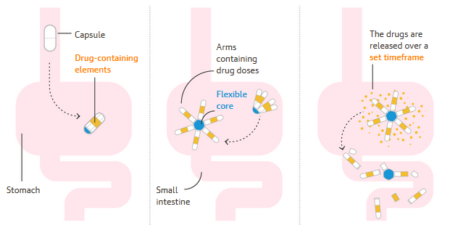Blood-cell vaccine, skin-cell Covid treatment, new drug on the street, and more
12 Mar 2022
Posted by Andrew Kantor
The next new scourge
It’s about time for a new ‘drug on the street to worry about’ story. The drug: xylazine, added to fentanyl. Why would people want to use a veterinary tranquilizer with an opioid? Experts don’t know. But it’s dangerous (of course) because a sedative is a Bad Idea if you’re in respiratory distress.
And because labs don’t normally test for it, the actual usage might be higher. Said the author of the paper that described the trend, “[It’s an] especially noxious contaminant that is spreading through the drug supply.”
Clarificorrection
On Thursday we told you about how the American Medical Association is very much against expanding the Covid ‘test to treat’ program for Covid-19 to more pharmacy-based clinics. Our headline was “AMA to pharmacists: Stay in your lane.”
Reader C.A. pointed out an obvious problem with that headline: “GPhA is making the same mistake I’m seeing everywhere. The AMA is not insulting pharmacists. They are insulting the midlevel providers who work in clinics inside the same building as pharmacies (such as CVS Minute Clinics) i.e., NPs and PAs.”
No argument. We sacrificed accuracy for a titillating headline!
A vaccine from blood
Canadian scientists have come up with a new kind of vaccine — one that uses the empty husks of red blood cells. It took a team of physicists, chemists, and immunologists, and the gist is that they make the cells look like whatever virus they want to vaccinate against. To pick a disease totally at random, how about … Covid-19? In that case…
“We take red blood cells and remove everything from the inside. We then attach spike proteins to their outside to mimic a corona virus.”
The idea is that this method is flexible, doesn’t require genetic material, and reduces side effects. At the moment, though, it’s just proof-of-concept.
Watch those kids
If you have teen or young-adult patients who just started taking either a stimulant or a benzo, keep an eye out, at least metaphorically. A new study out of Rutgers found that there’s been a noticeable uptick in overdoses for first-time users of those drugs in particular.
They found that 29 percent of youth with overdoses involving [a benzodiazepine] had a doctor-written prescription dispensed in the prior month […] while 25 percent of youth with an overdose involving stimulants had a stimulant prescription dispensed in the prior month.
Today’s Covid-19 treatment is made from …
Human skin cells, specifically dermal fibroblasts. Normally they produce nanoparticles called extracellular vesicles (EVs) that allow communication between cells and tissue. In this case, Cedar-Sinai scientists* tweaked the skin cells (via science magic) so they made EVs that repaired tissue instead.
They tested this repair system on human lung epithelial cells — the very ones attacked by the SARS-CoV-2 virus. Not only did it stop a deadly inflammatory process, the lung cells also made less of the ACE protein, which SARS-CoV-2 needs to infect and replicate.
“This potential anti-COVID-19 biological therapy is novel in that it has two facets: It protects infected cells, which remdesivir does not do, and also inhibits viral replication.”
* Try saying “Cedar-Sinai scientists” five times fast.
One-a-Week pill tech
The technology for a pig contraceptive — that allows it to be given weekly instead of daily — is coming to other meds. After all, why carry around all those old-style pills when you can take something that opens up like a snowflake?

Human trials of the pill itself are beginning soon, with phase-1 trials for a risperidone version “expected to be submitted for approval by the [FDA] by the end of next year,” and versions for levomethadone and rosuvastatin in the works.
The technology is opposed by the Alliance for Larger Pill Bottles because of something-something safety, terrorism, jobs, etc.
There is no Daylight Saving Time story here
Because 42 gazillion articles about the dangers of changing the clock are more than enough. Have a great weekend.
(Fun fact: The correct term is Daylight Saving Time — there’s no extra “s” in Saving.) (You’re gonna check that, I know.)


